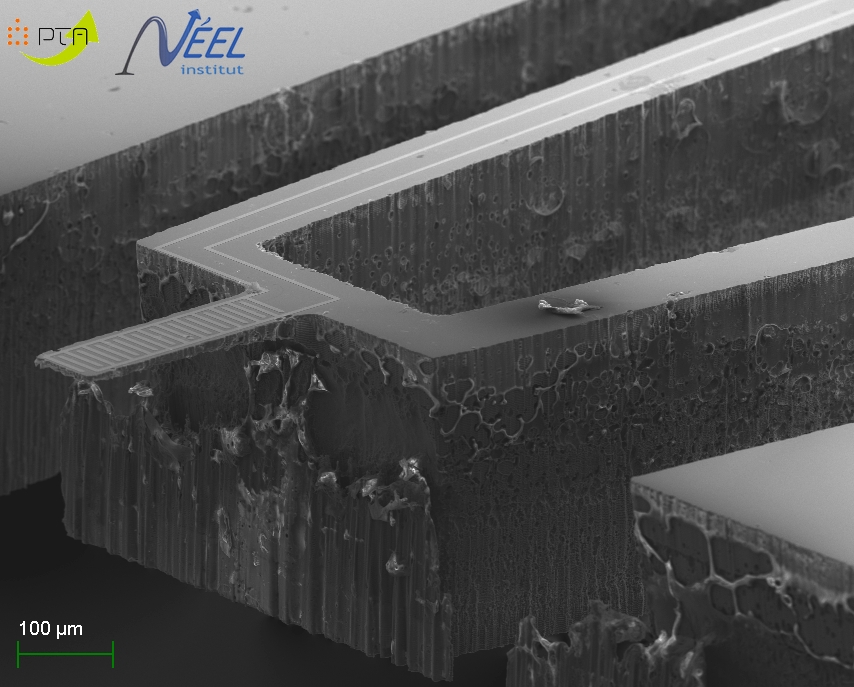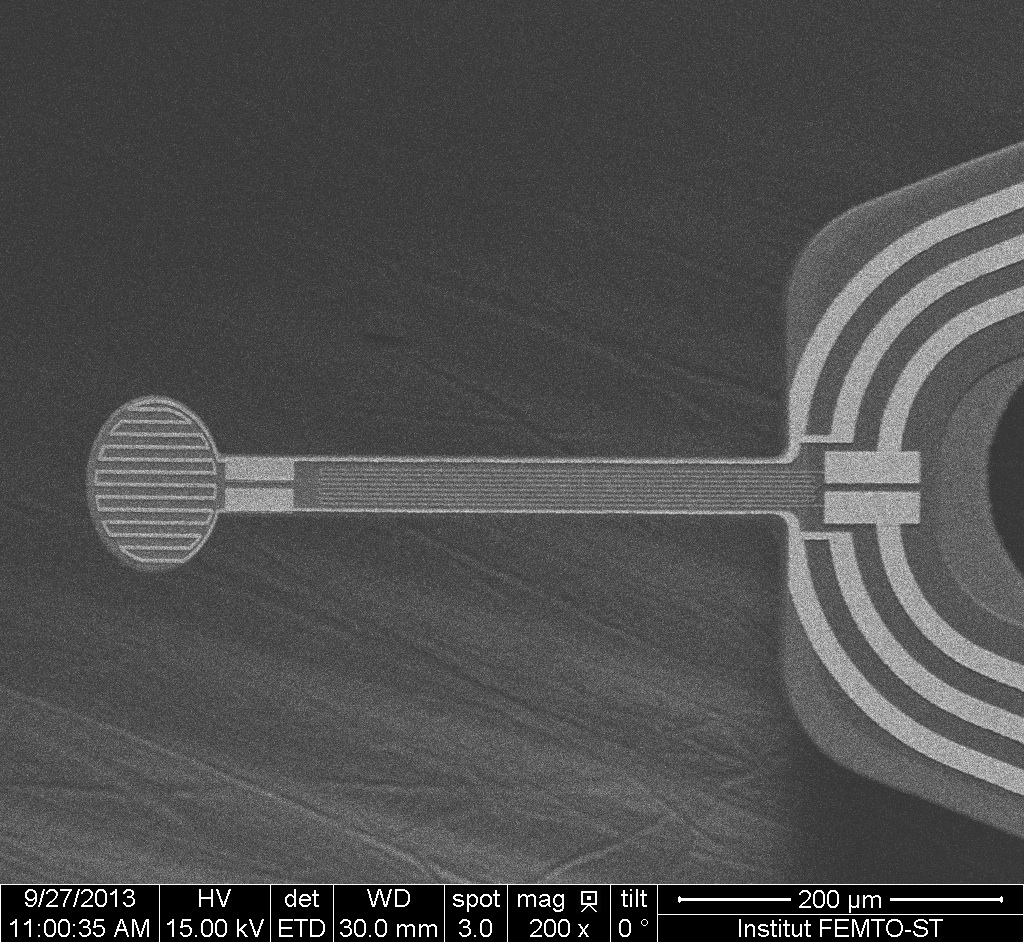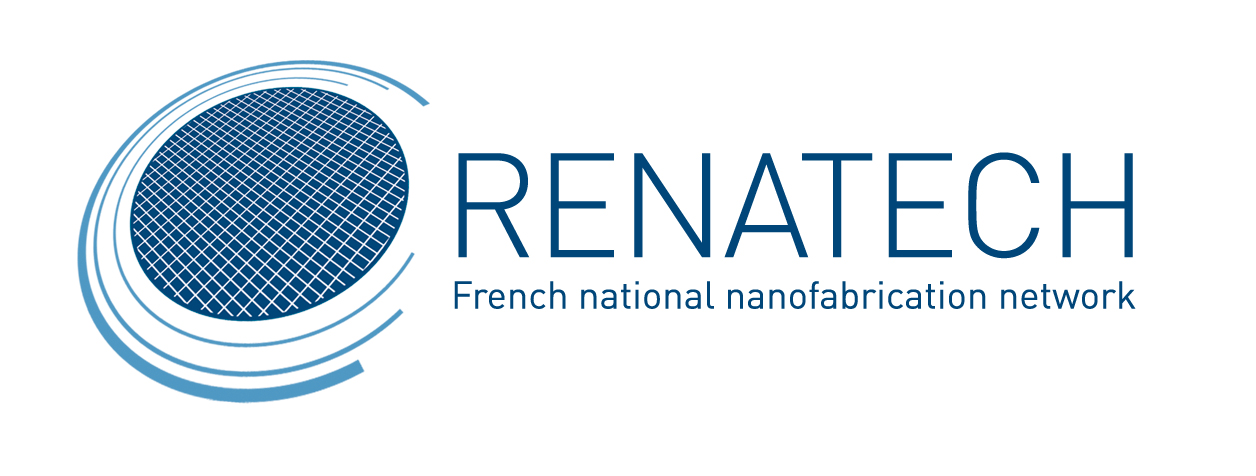Local velocity probe for cryogenic helium
The experimental study of superfluid turbulence, i.e. the hydrodynamics of strongly stirred liquid helium at very low temperature (T < 2.17 K) requires specifically designed local probes. These probes need to be both very small and highly sensitive to measure the small scale velocity fluctuations that are fast and have a low amplitude.
To do this, we designed a cryogenic velocity probe based on a cantilever. The sensitive element of the probe is the cantilever tip (300 µm long, 100 µm wide, 1 to 10 µm thick), etched in a bulk silicon wafer using fluoride Deep Reactive Ion Etching. This tip is immersed in the bulk of a flow and gets deflected by the incoming fluid. The amplitude of this deflection is proportional to the square of the flow velocity in the vicinity of the cantilever tip. A precise measurement of the deflection fluctuations is achieved using a radio-frequency superconducting niobium LC resonator sputtered on the tip whose resonance frequency shifts when the cantilever is elongated.
This technique prevented us to allow the presence of any disordered dielectric material on the sample because they would lead to phase noise of the LC resonator. This precluded us from using an oxide barrier layer. Therefore we had to devise a way to properly tune the thickness. We used the etching machine refrigerating helium leak rate as an progress indicator. The first prototype has been cooled down and tested and showed good performances, similar to these of the best probes known to work in superfluid helium, and we believe that we can improve them even further in a near future.

Figure 1: Scanning-Electron Microscope picture of the monocrystalline silicon cantilever.
The niobium capacitor is clearly visible on the surface.
See the Superfluid section for more details on my work on superfluid turbulence.
Local heat-flux sensor based on a cantilever anemometer
Turbulent thermally-driven flows are ubiquitous in nature, cities and industrial systems. In these systems, heat is transported by coherent structures called “thermal plumes”. Our main objective is to design an innovative sensor that will allow direct access to statistical features of these objects. The sensor will probe locally velocity and temperature fluctuations at the same point, giving access to the advected turbulent heat flux. It consists in a modified SiO2 cantilever anemometer (1.2 µm thick, 50 x 375 µm in size). The measurement combines a strain gauge to measure the cantilever elongation and a temperature-sensitive thin layer to measure the temperature. Both layers are deposited and structured directly on the cantilever. Our aim is to design several versions of this probe (in terms of the cantilever geometry and sensitive material properties): first for water (rho = 1000) and air (rho = 1) flows at room temperature, and then possible modifications will be investigated for cryogenic helium flows (1 K < T < 6 K).

Figure 2: Scanning-Electron Microscope picture of the combined velocity and temperature probe.
The thermometric resistance is visible at the tip of the cantilever. The strain jauge
can be seen between the golden tracks along the cantilever.
The developments of this sensor for low temperature experiments are supported by the European High-Performance Infrastructures in Turbulence (EuHIT) program. The developments of the probe for measurements of the natural ventilation in buildings is supported by the French Labex iMust (Institute for Multiscale Science & Technology). See the Thermal convection section for more details on the purpose of this sensor for the natural ventilation of buildings.


